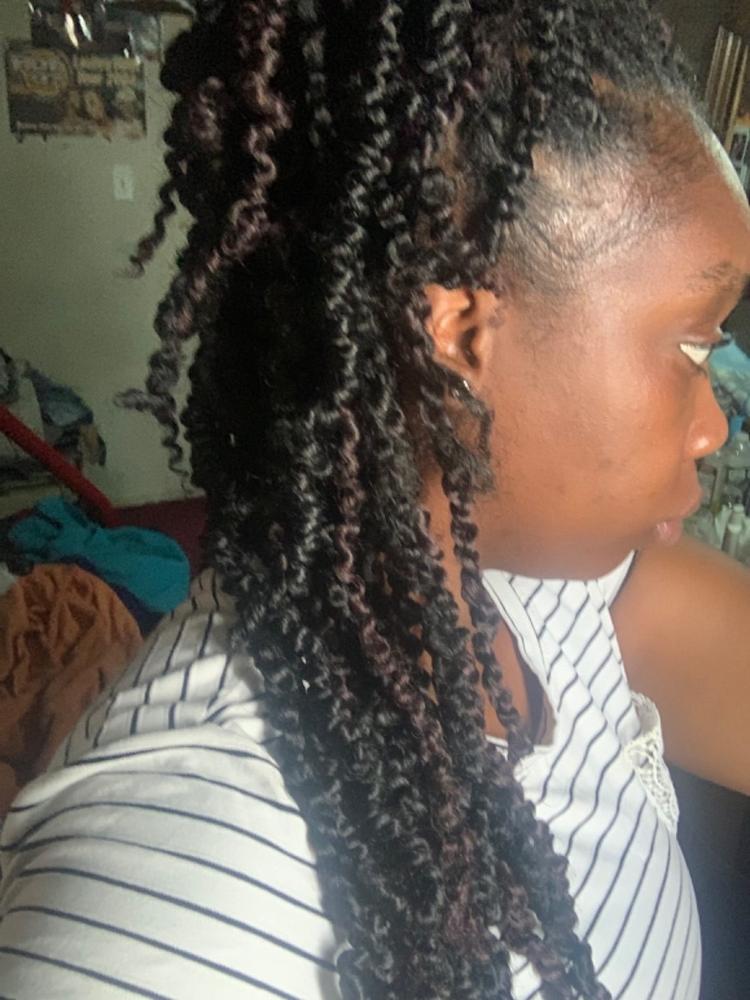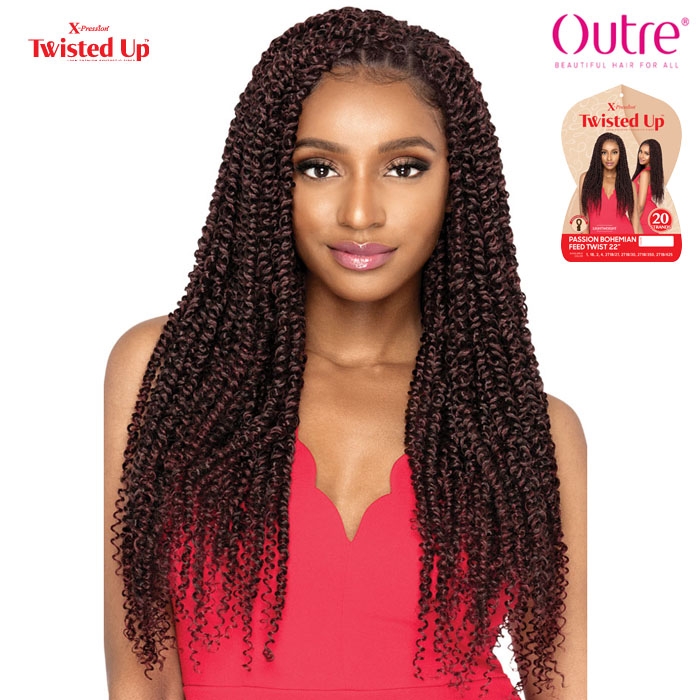

The tradition of braiding and styling hair is so sacred that there are actually a lot of rules and guidelines for it including: when and where to style, differences based on gender, and different rituals and customs.
#TWISTED UP SPRINGY AFRO TWIST 24 HOW TO#
Normally it is the elders who style all of the hair in one's family, and it is important for the others to learn how to do so. The thickness and healthiness of the hair mirrors positive attributes from the culture for both women and men. Hair is a very important aspect of African life. Every African hairdressing was codified according to the ethnic group and by status." In the ancestral traditions, hairdressing was "an activity during which the genealogies' history and many other cultural features were taught to children. The deportation of millions of Africans made them separate from their originally aesthetic activities regarding hair care. ĭuring the Atlantic slave trade, the conditions of servitude did not allow to take care of one's hair, which was subjected to denigration by the master: 'nappy' became a pejorative term. Morgan invented a revolutionary relaxer cream. At the time, the most used instrument was the hot comb, until 1909, when Garrett A.

Nevertheless, black populations looked for straightening their hair, so as to move closer to the dominant aesthetics, if only to find employment. Ī century earlier, in 1865, slavery was abolished at the end of the American Civil War. It was adopted by many stars, like Diana Ross and the Jackson 5. This dense and spherical hairdressing thus symbolized the emancipation and cultural affirmation of African Americans.

Angela Davis, a young human rights activist and member of the revolutionary movement Black Panthers created in 1966, made the Afro hairstyle famous. In the period between the 1960s–1970s, the racial segregation between the black and the white reigned in the United States. This hairstyle can be a mark of social and spiritual distinctions: "The adoption of long or very atypical hair rebellion or a refusal of the dominant values." ĭuring the 1970s–1980s, the ′ Jheri curl′, another technique to loosen tightly curled hair, became fashionable in the African American community, popularized especially by some celebrities, such as Michael Jackson, seen in the music video for his song Thriller.ĭuring these same years, dreadlocks (naturally matted hair locks) were also introduced into popular culture and popularized by Bob Marley, reggae music, and the Rastafarian movement. In the 1980s–1990s, hair straightening was considered mainstream and done frequently. However, among black women, 98% have had their hair straightened at least once in their lives, and relaxers have represented no less than 70% of the cosmetic purchases carried out by the population. The return to natural hair in the organic era has been encouraged by the awareness of the harmful effects of relaxers on the scalp, ranging from itchiness, red patches, burns and alopecia. History įurther information: Hair straightening and Relaxer

It is surmised that nappy may have originated as a pejorative reference to the frizzy texture of cotton picked by Black slaves. In the past, the word was subject to denigration, having origins that stretch back to the Atlantic slave trade. In Francophone countries, nappy is often used as a portmanteau of 'natural' and 'happy'. The word nappy, historically used as a derogatory term to describe the hair of Black people, has been positively reappropriated by Afrodescendants. Additionally, "being natural" does not necessarily indicate a strict adherence to any particular type of product or styling regimen nor should it be exclusively tied to certain social or political beliefs. However, it must be noted that not everyone who wears their hair naturally will choose to forgo all (non-chemical) forms of straightening or styling. Afro-textured hairstyles can vary, and may include the adoption of hair twists, braids or even dreadlocks. To relax one's hair means to use chemicals to straighten it, which can be done professionally, or through a kit purchased at a grocery store for home use. These individuals of African descent choose not to relax their hair, allowing it to instead, grow in its natural texture. The movement centers around Black people who wear afro-textured hair in its natural, coiled, kinky, or tight curly state.


 0 kommentar(er)
0 kommentar(er)
